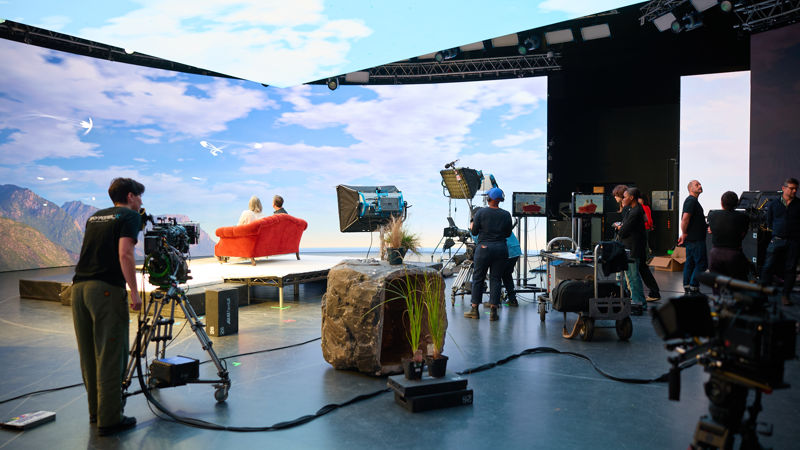AICE Takes a More Encompassing View
The post production trade associationulls international president and executive director talk about opening the doors to motion graphics, design and VFX shops.
|
AICE Opens Membership to Motion Graphics, Move reflects changing nature of post production workflow.

AICE Executive Director Burke Moody (l.) and International Board President Tom Duff of Optimus, Chicago.
The AICE has updated and expanded its membership eligibility requirements to now include design, motion graphics and visual effects companies. The change—in the works for several months—was recently announced by Tom Duff, President of Optimus in Chicago and President of the International Board of AICE, and by Burke Moody, AICE’s Executive Director. Now eligible for membership in the post industry’s trade association will be motion graphics, design and visual effects companies, as well as the artists who work for them. These include independent firms, as well as those related to or affiliated with existing post companies. AICE’s general membership ranks include some 95 companies in cities across North America. The association has chapters in New York, Los Angeles, Chicago, Detroit, Toronto, San Francisco, Boston, Dallas and Minneapolis. The shift in membership eligibility is a reflection of the fact that AICE member companies have for some time been aggressively expanding the technology, services and talent they have to offer to the marketplace, according to Duff and Moody. The membership expansion gives a voice to the design, motion graphics and visual effects companies that now comprise a large part of the post production world, they add. “An association is the people behind it,” says Duff, who also serves as President of the AICE Chicago Chapter. “Editors have always been storytellers. When a designer creates a spot that is all animation or effects, they're editors and storytellers, too. Opening the membership to these companies will give the organization more perspective. We'll be better able to provide a more holistic set of programs and services to our members, and to the industry at large.” Moody explains that move is a reflection of the current state of post production. “This change more closely aligns our membership and its goals with the trends in the industry and the marketplace,” he comments. “Design, motion graphics and visual effects companies tend to be post-production oriented. Since many of our member companies already have in-house graphics, VFX and design departments—or have standalone design divisions—the board felt opening the membership to these companies made sense.” Among the companies that fit the new criteria for AICE memberships—and in fact are currently AICE members are firms like the New York office of Superfad; the Chicago-based Protokulture; Pictures in a Row, based in L.A.; and Ntropic, which is based in San Francisco. All are independent design and production studios, in that they’re not affiliated with or jointly owned by existing creative editorial studios. The inclusion of these companies says more about the changing scope of AICE’s mission than it does about how the world of post production has been redefined by new technologies and workflow processes, Moody explains. “This is not about redefining post production,” he says. “Rather, what are being redefined are the segments of the post production market AICE serves, and who our members are. In the process, we’re becoming a broad-based post production trade association, rather than just a creative editorial trade association. The result is that it opens the doors to more people in the same business.” Industry response to the development has been characterized by Moody as very positive. He points out that the recent joining of Protokulture in Chicago is a direct result of this initiative, and he has since fielded a number of membership inquiries from companies across the US since word first got out about the move. “Everyone realized that this is where we are already,” he says about the new, wider tent for AICE. “This represents the next step for our organization.” Published March 18, 201 |







 Membership
Membership



